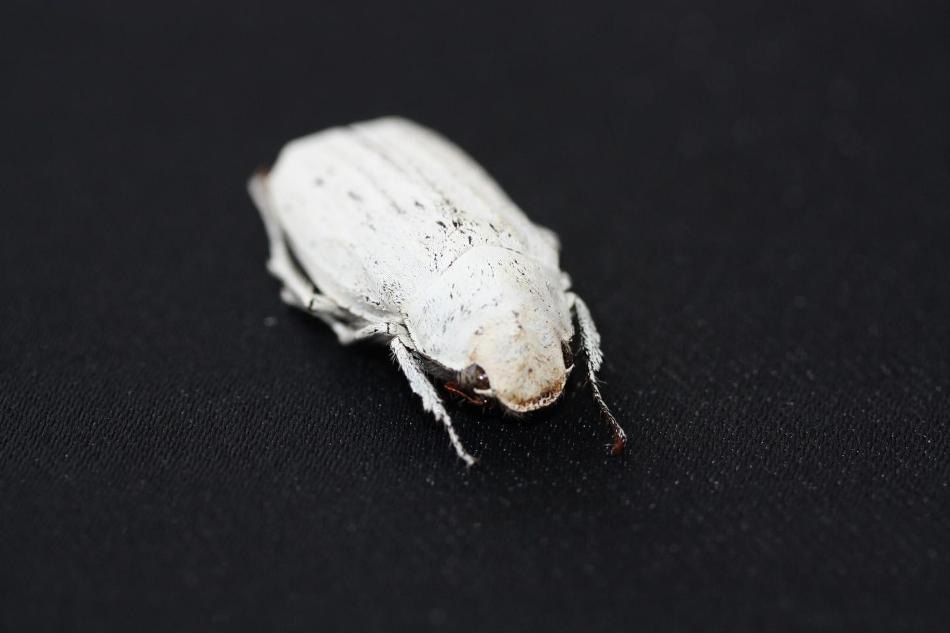Mar 14 2018
A super-thin, non-toxic, ultra-white coating that is light in weight and edible has been developed by scientists. The coating can be used to produce brighter coatings and paints for use in the food, cosmetic, and pharmaceutical industries.
 This is a Cyphochilus beetle. (Image credit: Olimpia Onelli)
This is a Cyphochilus beetle. (Image credit: Olimpia Onelli)
The whiteness of the material is 20 times that of paper as it mimics the structure of the ultra-thin scales of specific kinds of beetle. It is produced by using non-toxic cellulose. The outcome of the study has been published in the Advanced Materials journal.
In general, bright colors are made by using pigments that absorb specific wavelengths of light and reflect the others, which is then perceived by our eyes as color.
However, to appear white, the entire wavelengths of light have to be reflected at the same efficiency. Majority of the commercially accessible white products (for example, cosmetics, sun creams, and paints) include highly refractive particles, most commonly zinc oxide or titanium dioxide, to efficiently reflect light. Although these materials are thought to be safe, they are not entirely biocompatible or sustainable.
In the natural realm, a type of beetle native to Southeast Asia—the Cyphochilus beetle—produces an ultra-white coloring. It does not use pigments to achieve this; rather, it makes the most of the geometry of a close-packed network of chitin. Chitin is a molecule found in insect exoskeletons, mollusk shells, and the cell walls of fungi and its structure can scatter light with much higher efficiency, leading to the formation of very thin, lightweight, and ultra-white coatings.
White is a very special type of structural color. Other types of structural color—for example butterfly wings or opals—have a specific pattern in their structure which results in vibrant color, but to produce white, the structure needs to be as random as possible.
Dr. Olimpia Onelli, Co-Author - Cambridge’s Department of Chemistry.
The Cambridge researchers collaborated with researchers from Aalto University, Finland, and simulated the structure of chitin with cellulose, an abundant, biocompatible, non-toxic, and strong material. They used minute strands of cellulose (i.e., cellulose nanofibrils) to accomplish the same ultra-white effect in a flexible membrane.
The team used a blend of nanofibrils of distinctive diameters to adjust the opacity, and thereby the whiteness, of the end product. The membranes developed from the ultra-thin fibers were highly transparent. In contrast, the membranes developed from medium and thicker fibers led to the formation of a more opaque membrane. Thus, the team could calibrate the geometry of the nanofibrils such that they reflected the major portion of the incident light.
“These cellulose-based materials have a structure that’s almost like spaghetti, which is how they are able to scatter light so well,” stated Dr Silvia Vignolini, senior author of the paper, who is also from Cambridge’s Department of Chemistry. “We need to get the mix just right: we don’t want it to be too uniform, and we don’t want it to collapse.”
Similar to the scales of the beetle, the cellulose membranes are exceptionally thin, with a thickness of only a few millionths of 1 m. The team is confident however, that more minute membranes can be developed by further advancement of their fabrication method. When compared to paper, the membranes can scatter light with 20-30 times higher efficiency and can be used to develop futuristic, bright, efficient, biocompatible and sustainable white materials.
The UK Biotechnology and Biological Sciences Research Council and the European Research Council partially funded the study. Cambridge Enterprise, the University’s commercialization arm, has patented the technology.